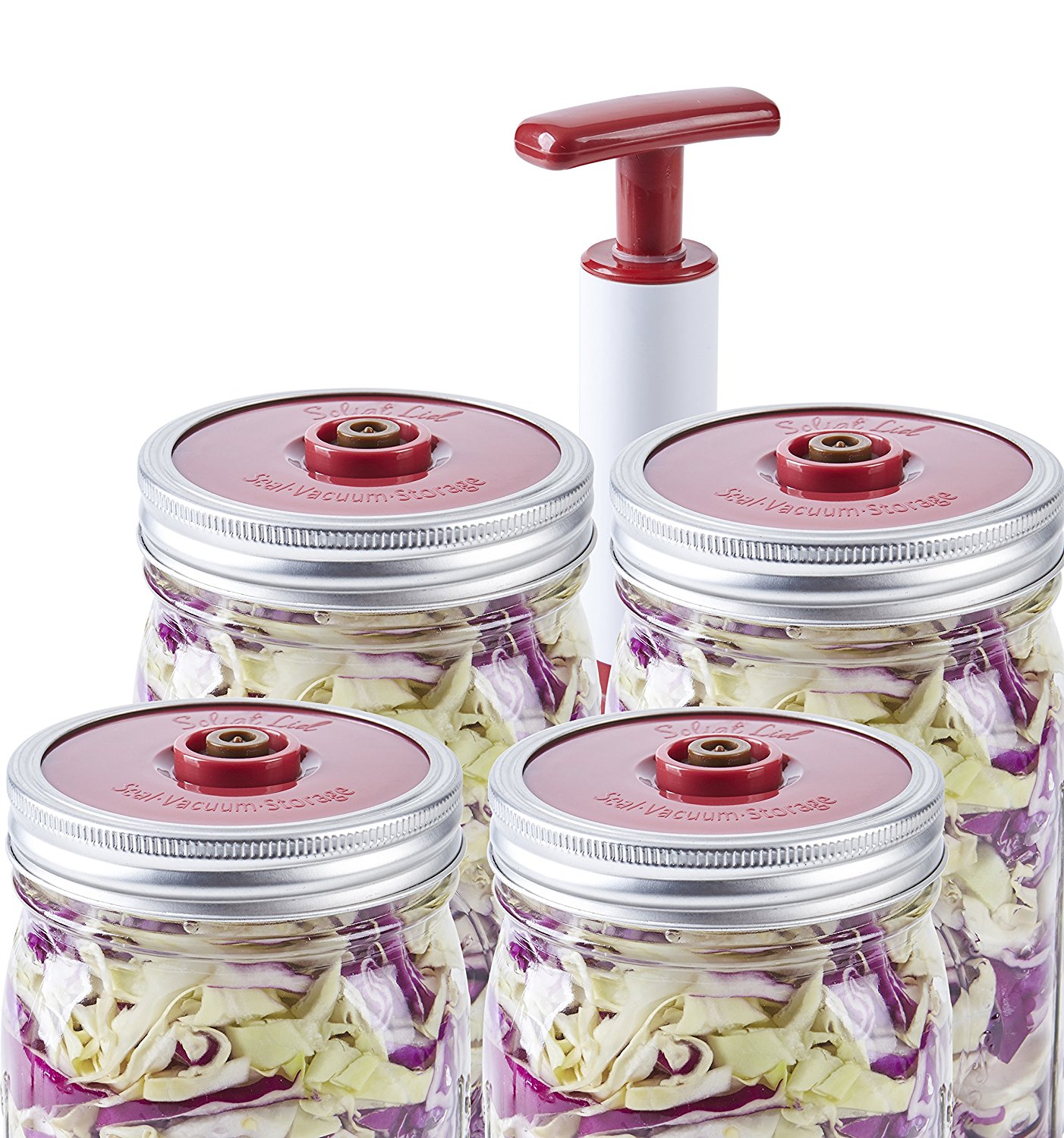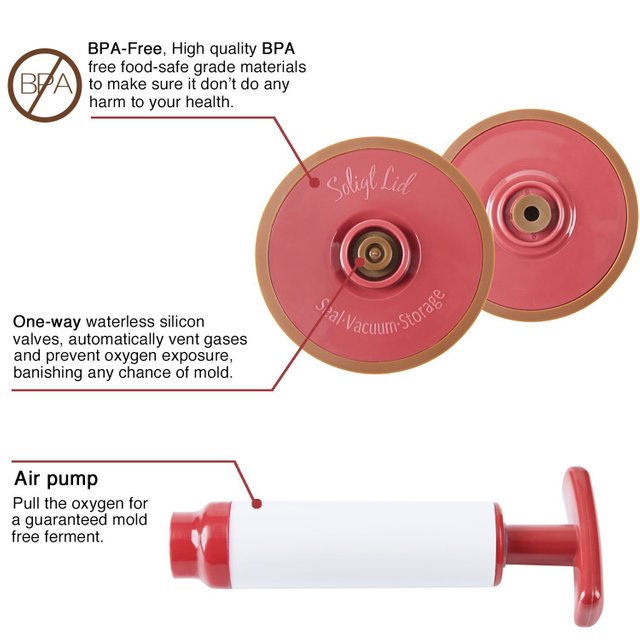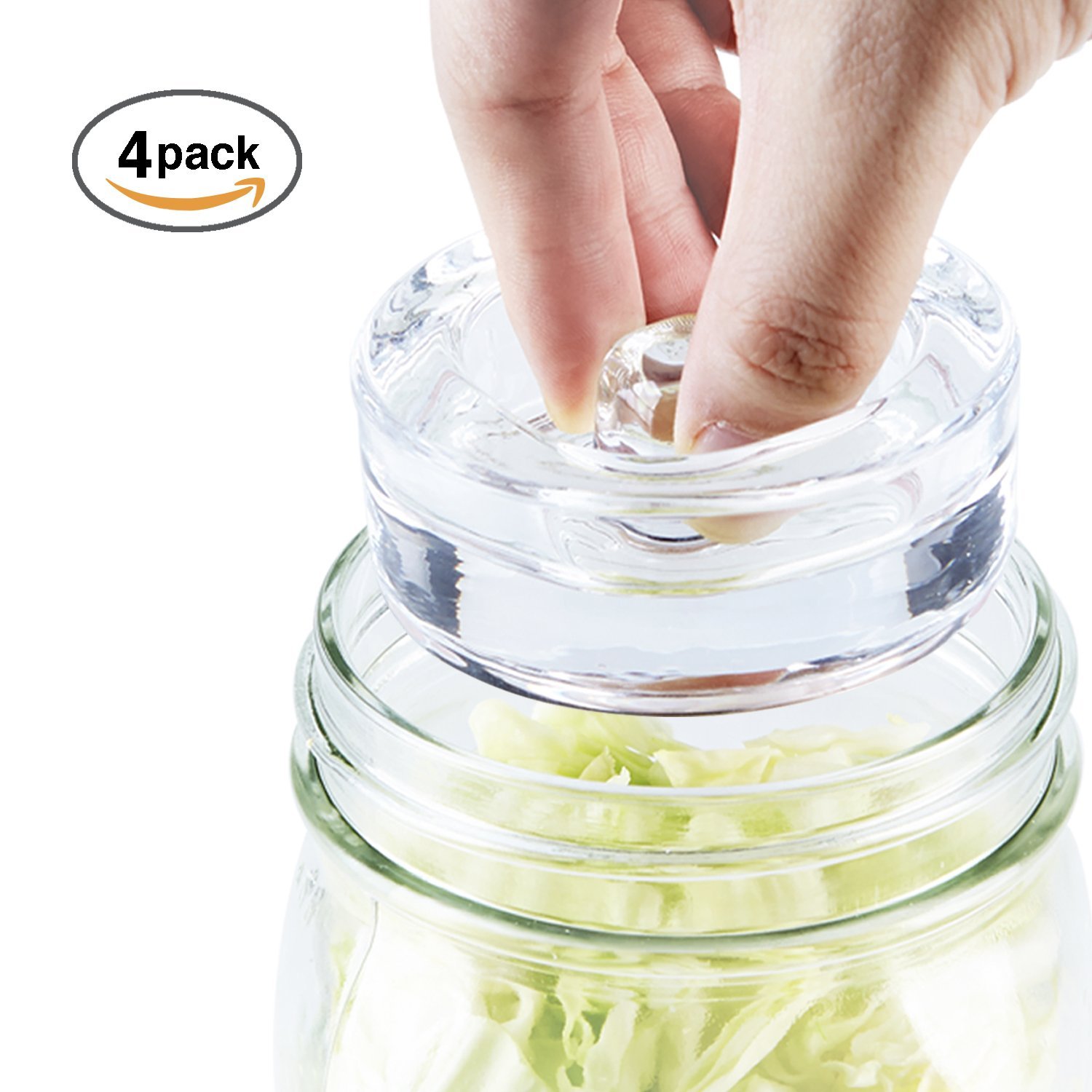Fermentation On The Road
When thought of, fermentation is often assumed a daunting process: painstaking, particular, and only for the 'pros' in the kitchen. I can testify, however, that fermentation can be done with ease and even while living full time on the road!
If you aren't already aware, fermenting your own foods can provide you with the highest quality probiotics at the lowest cost. These little critters called microflora are well known to improve immune function, protect against bad bacteria to prevent infection, and improve digestion and absorption of food and nutrients.
So why not just pop a supplement? Fermented foods and drinks are documented to be superior to priobiotic supplements in a multitude of ways. They are guaranteed alive and active; you can see it with your own eyes! Fermented foods are packed with vitamins, minerals, and enzymes, and the microflora living on them vastly increase the bioavailability of these nutrients to your body. With fermented food and drink, you get a variety of bacterial strains instead of just one, and the microflora are generally more hardy and viable than those in supplements and can start working right away once they reach your intestines.
I am only a couple of months in to my own sauerkraut making out of my van and the Class C RV of my partner in crime. Like with most things in my life, I strive for meaning, simplicity, high quality, and pleasure, and the kraut is no exception. I'll give you a brief run-down of how the funky bubbly process all goes down!
If you want to make your own simple sauerkraut, you're going to need a few things: glass jars with lids that fit, fresh cabbage, good salt, a big bowl or pot, and some time and attention. Add these bonus items (which I provide more information on below) to take it up a small notch in ease of process and quality of taste: vacuum seal lids, glass fermentation weights, starter culture, other vegetables. Remember, the main goals when making sauerkraut are to create an anaerobic (oxygen-free) environment for your vegetables by keeping them below a brine, having appropriate salinity of your brine (correct salt to water ratio), working temperatures, and adequate time.
If you are living in a vehicle like I am, you may have to take a couple of things into more consideration than someone who is not: movement and temperature. Ferments are known to happen best at stable temperatures between 65 and 75 degrees Fahrenheit; any hotter, fermentation will happen faster, while cooling it off will slow fermentation down. If you are living in a vehicle without the means of constantly maintaining a steady temperature, your ferments will be exposed to often wildly fluctuating temperatures. A home on wheels is meant to move. Jars jostling around inside of a moving vehicle will stir up the gases inside the jar which will need to be monitored and released before too much pressure builds up and pops a lid or breaks a jar creating a mess and possibly ruining your batch. Movement will also likely cause cabbage pieces to float up to the top of the brine and expose them to air, which you don't want. Here's how I deal.
If you are traveling full time, I highly recommend vacuum seal lids as they allow gases to escape and release pressure without you having to intervene. I also use glass weights inside of the jars to hold the cabbage down so it doesn't float up in the brine while I'm moving. I'll add some photos and then links to these products which I found to be the cheapest online at Amazon. I am also lucky to be caravan-ing with someone who has an RV that we spend most of our time in and work to maintain pleasant stable room temperature in. I store the fermenting jars in a cool, dark place inside while we are boondocking, and then I transfer them inside a cardboard box that I padded with some styrofoam to the van where they can ride more smoothly until we reach our next destination.
This may seem like it could be a pain, but I cherish the process and my creations and my nomadic lifestyle so much that I don't mind. We also camp without air conditioning, so I wasn't sure how my ferments would fair when spring temperatures in southern Arizona crept up over 80 degrees Fahrenheit, but with a little extra monitoring to observe and to occasionally adjust brine levels and jar pressure, every batch has turned out great! Most online instructions on how to ferment sauerkraut are written by people who have a passion for getting it perfect or who at least have means for creating and maintaining the ideal conditions for their ferments. I am pleased to share that it can be done easily and safely in less than ideal conditions, and you can create a food that is extremely nutritious, healing, delicious, and rewarding to make.


Link to the vacuum seal fermentation lids I bought online: https://www.amazon.com/gp/product/B0772FXZMR/ref=oh_aui_detailpage_o00_s00?ie=UTF8&psc=1

Link to the glass fermentation weights I bought online: https://www.amazon.com/gp/product/B076V66FZ4/ref=oh_aui_detailpage_o00_s00?ie=UTF8&psc=1
I have learned that the minimum time to allow your kraut to ferment for maximum probiotic content is three weeks. So I make one batch split into two quart jars about every week or so. This means that every week, my partner and I will have one batch to eat through. I split the batch to give my ferment a little more room in the jar, again accounting for fluctuating temperature and movement from life on the road. If you leave two inches of space between the top of the brine and the lid instead of the generally recommended one inch, there is more space for the brine to rise and fall (as it does when temperatures fluctuate) without overflowing out of the jar, as well as more space for pressure to build before potential explosion.
I only purchased four vacuum seal lids and four glass weights. I use these for the first week of a batch's life, and then I switch the lids and weights over to the jars in the new next batch, replacing them with the standard lids that came with the jars and no weights. I read and learned for myself that after 6-10 days, it's okay if the cabbage is above the brine, so I no longer need so much the glass weight to hold the cabbage down, because it's usually no longer floating at this point. And I no longer need the vacuum seal lid, because not as much gas is being formed and trying to escape at this point, building pressure. I simply use the metal lids and rings that the jar came with, screw them on hand tight, and unscrew occasionally to 'burp' the jars. Again, the vacuum lids and glass weights are transferred to the fresh batch I'm making where they are more useful.
Recipe for one batch of On-The-Road Sauerkraut
What you'll need:
Running water and soap or vinegar to clean hands and supplies
Clean work space, a small counter top will do
Two glass quart jars with lids
Knife and cutting board
Two big bowls or pots
Ingredients listed below
Ingredients:
One large head of green cabbage
Two medium size carrots (not necessary, but adds a little extra sweetness, color, and texture)
Two tablespoons of pure salt (no weird additives, anti-caking agents, etc.)
Starter culture (probiotic capsule or splash of kombucha is what I use) though not necessary, this ingredient sets you up for better success by encouraging the growth of beneficial bacteria instead of hostile ones.
Directions:
Wash your hands.
Prepare your clean work space.
Wash your jars, lids, bowls or pots, knife, and cutting board, and let it all dry.
Wash your hands again.
Start prepping vegetables while your supplies dry. I chop my cabbage as thinly as I can with the knife into pieces about an inch to two inches in length, same with the carrot. Split the chopped cabbage and carrot equally between your two bowls or pots.
Sprinkle a tablespoon of salt into each bowl, and start mixing with your hands. If you have sensitive skin or wounds on your hands like I do these days, wear food safe gloves. Once you mix the salt in, back off and let it all sit for about 15 minutes. This makes your next job easier by allowing the salt to draw water out of the vegetables.
After 15 minutes has passed, start massaging, squeezing, even punching your vegetables to release more water from them to create your brine. I do this to each bowl full of veggies for about 5-10 minutes, and that is usually enough to create adequate brine.
At this point, I'll add my starter culture by breaking open my probiotic capsule and sprinkling it in or splashing in my tablespoon or so of kombucha, and then I'll mix a little more with my hands.
Now, put all of the contents in one bowl into one quart jar, and the contents of the other into the other quart jar. Push the vegetable down into the jar, releasing bubbles and smashing all of the vegetable below the brine. You should have at least an inch of brine covering your veggies. If not, you can create more by squeezing more liquid out of your cabbage or by creating extra brine with one tablespoon of salt per 2 cups of water. It's recommended to have an inch of space between the top of the brine and the lid of the jar. I like to leave two inches because of movement and temperature fluctuations from travel, just as a safety net. If you have glass weights, you can add one now by just setting it lightly on top of the vegetable. It's okay if some pieces are floating. Scoop out as much as you can, and don't worry about the rest. If you don't have glass weights, I've read that you can also use a large piece of cabbage leaf on top of the vegetables to keep any little pieces from floating up.
Put the lids on the jars hand tight.
Wipe clean the outside of the jars and label with that day's date and maybe also the date three weeks from that day so you aren't tempted to 'forget' and open early!
Store in a cool room temperature, dark place.
Check on your ferments at least once a day, especially in the first few days, and manually release any gas by opening the lid if you don't have the vacuum seal lids.
If you see anything unusual in color or smell growing especially on top of the vegetables, open up the jar and with a clean utensil, scrape it off. The only unwanted growth I've had so far is what I learned was some Kahm yeast, which turns out to be harmless but potentially off-putting in smell and taste. I scraped off as much as I could and just avoided eating the pieces of cabbage and carrot it had grown on.
Wait just three weeks and then open it up and give it a taste!
Tips and Storage:
If after 6-10 days, you notice that there is no longer any brine above your vegetables, don't panic! This is actually normal. It is also safe, because at this point, there are enough beneficial bacteria to keep out the hostile ones that could cause mold or other nastiness in your ferment.
If something extra funky is going on, I like to first do a sniff test. If it doesn't smell quite right inside the jar, i.e., not a little sour, sweet, and salty cabbage that gets your mouth watering, then examine more closely. If there is anything the least bit fuzzy or cloudy or colorful (besides the colors of what you put in originally), try scraping it off or removing the pieces of vegetable that have it growing on it and wipe the bare insides of the jar clean and let 'er keep going.
If you don't have a refrigerator, like I don't, again, don't panic. Once I've reached the three week mark and open a jar of the sauerkraut, I remove a serving with a clean fork, scrape any pieces that came up on the sides back down, put the lid back on (and suck out the air with the pump if I have a vacuum seal lid) and put the jar back in the cool dark fermentation place. I eat the contents of the jar within a week, and it has yet to go bad. The vegetables simply keep fermenting, getting even more complex and strong in taste and I assume more beneficial in bacteria! With practice, you will get a sense for how long to let it sit out at room temperature for your tastes. People store their ferments in the fridge simply to stop the fermentation process from happening because they like the taste profile at a given time and want to preserve that. I have eaten a four-five week long fermented batch, and it tasted excellent!
These are two of my favorite online resources for learning how to make sauerkraut:
http://www.theprairiehomestead.com/2015/02/how-to-make-sauerkraut.html
https://www.makesauerkraut.com/sure-fire-sauerkraut-in-a-jar/
I hope this helps you on your journey in health, wellness, self-sufficiency, and the joy of creativity in the kitchen, whether it's on the road or not. Fermenting is one of the most rewarding things I've done in a while, and it is not nearly as challenging as I had made it out in my mind to be. It's actually quite fun and seems like a gift to be able to use what nature gives us to help ourselves and our loved ones to thrive! If you go for it, I hope you'll keep me posted on your process and share with me what you learn. We're all in this together.
Thank you so much for putting out such amazing content. We loved it so much we put it into our weekly curation report where you will be paid for your content from the rewards of the post. You can find it here:
https://steemit.com/helpie/@helpie/helpie-s-homesteading-curation-report-8-by-helpie-curator-llfarms
@llfarms Thank you so much for featuring me in your curation report! I love what you've put together and are sharing. It's great to be a part of it. You've motivated me to keep up the good content.
Saw your post featured in @llfarms helpie homestead curation report.
I haven't done a batch of sauerkraut in quite some time. Thanks for reminding me how easy and healthful it is! I'm putting cabbage on my shopping list!
I had never tried using a probiotic to spruce up the ferment, great idea - I'm going to try it.
In Peace, Love and Health!
@tamala That's great! Enjoy!! Let me know how it goes?
this is great, thank you for all the info,especially the vacuum seal fermentation lids I will have to look in to getting some of them for sure. Such great advice and attention to detail. look forward to more xx
@trucklife-family Thanks for reading. I'm so glad you found it helpful! That four pack was the best deal that I could find on the lids on Amazon. They seem to be good quality as they are still holding up well for me. They really do make the process easier, especially if you're on the road. If I were willing to spend a little more money on it, I'd try these! https://www.amazon.com/Pickle-Pipe-One-Piece-Waterless-Fermentation/dp/B01ERZGVVK
great stuff!! i love fermenting and can really relate with doing it on the road :) great post. resteemed on my page!
Awesome!!! Thanks! I'm excited to follow each other's journeys on here.
Amazing post! Resteeming. Such an excellent tutorial on fermentation. Everyone needs 'em! I love your way of life! <3<3 <3#goals
Hey, @karenfoster, thanks for reading and Resteeming!
Nice thanks for the inspiring tips
Hey, I'm glad you found them helpful!
great write up! lot of great info! happy fermenting! happy vaning!
I wish you happiness as well! :)
What makes this article great is the DIY knowledge you gained on your own and summarized in short, while it can be found in length in Sandor Katz's book 'The Art of Fermentation'. Thanks for sharing.